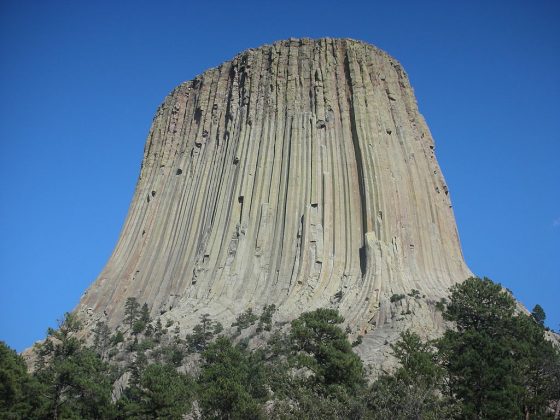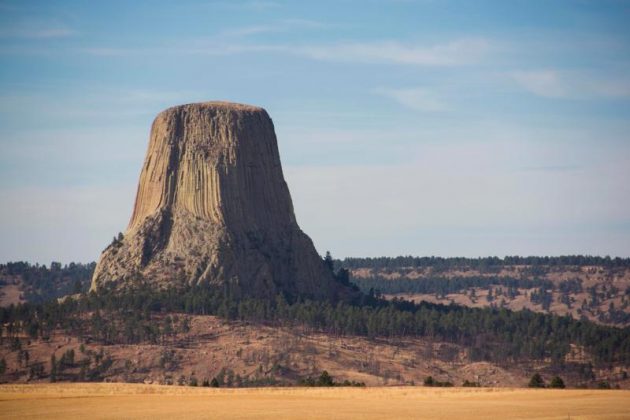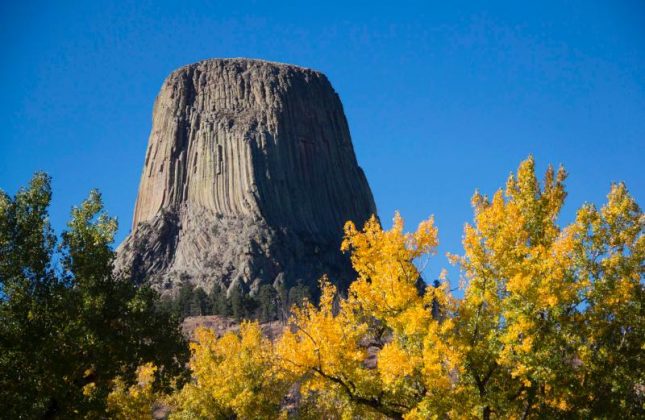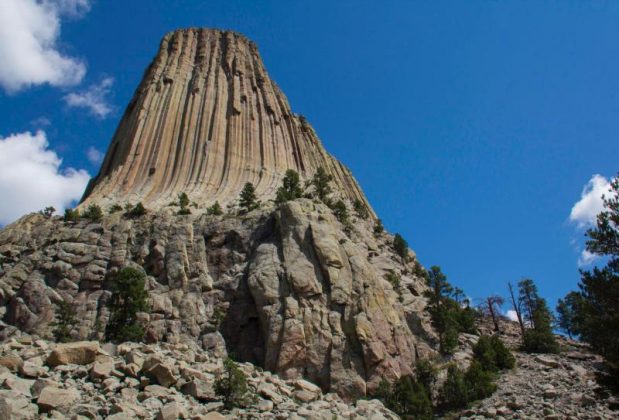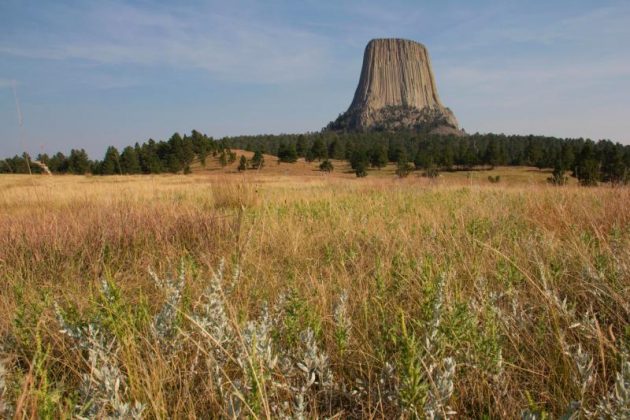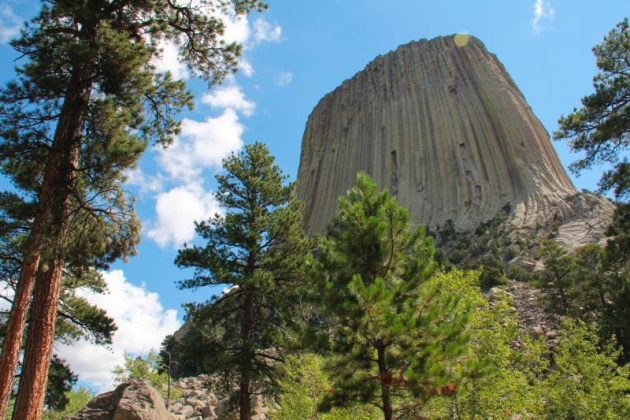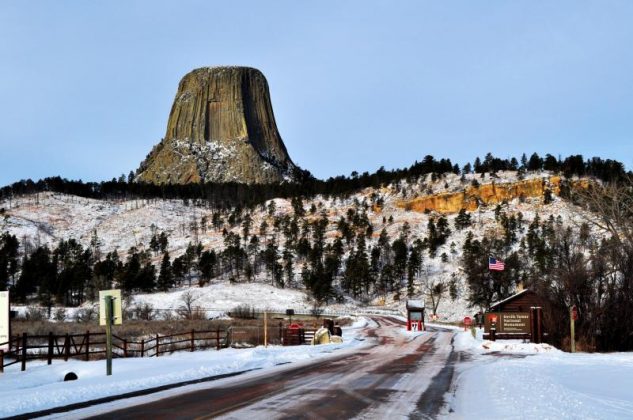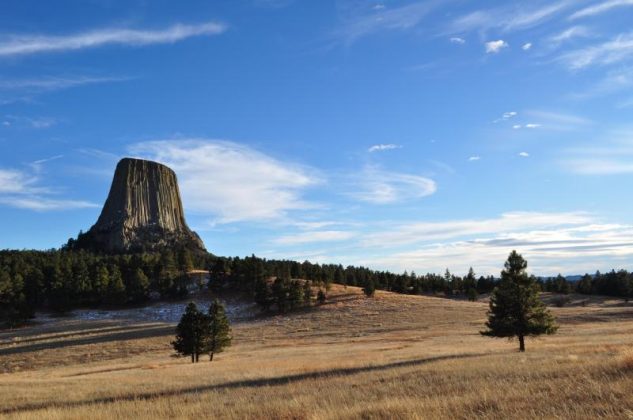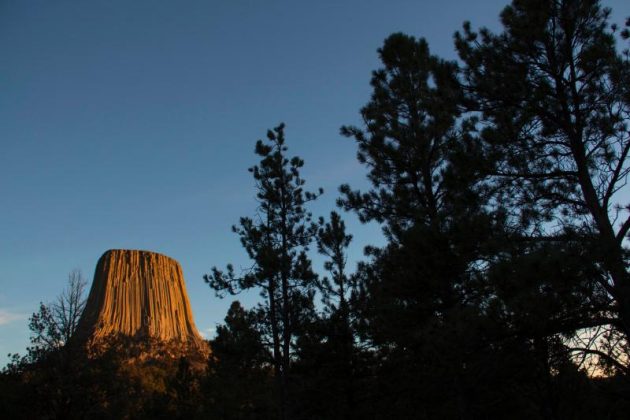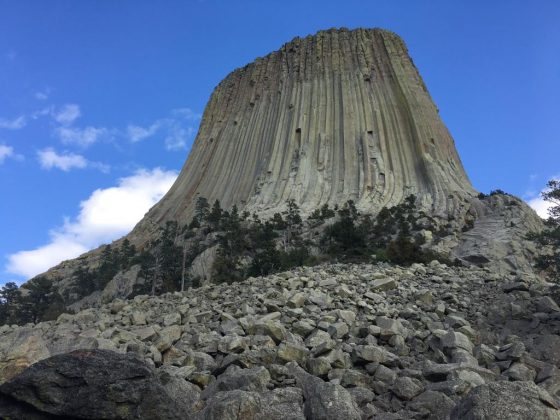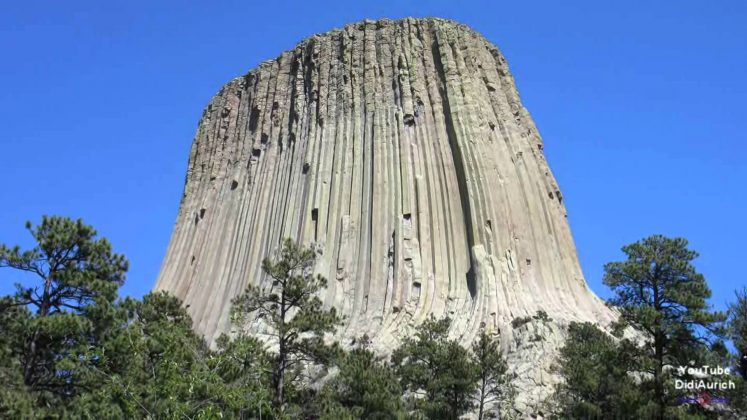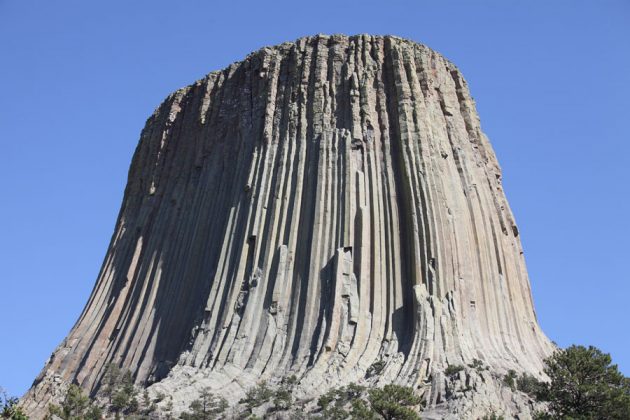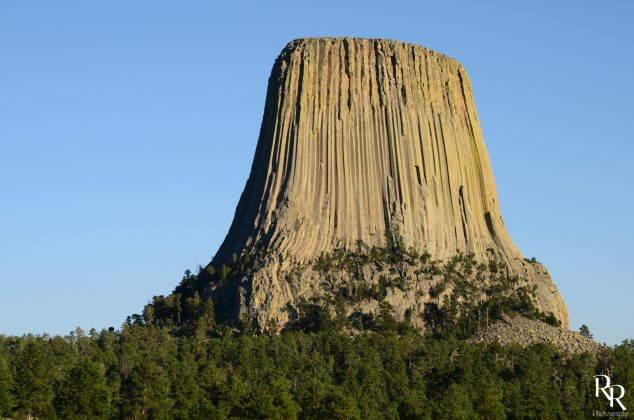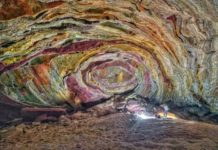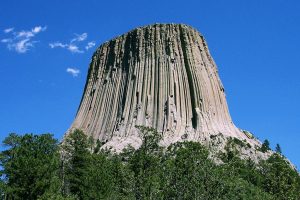
Devils Tower was the first declared United States National Monument, established on September 24, 1906, by President Theodore Roosevelt. The Monument’s boundary encloses an area of 1,347 acres (545 ha).
In recent years, about 1% of the Monument’s 400,000 annual visitors climbed Devils Tower, mostly using traditional climbing techniques.
Name
Tribes including the Arapaho, Crow, Cheyenne, Kiowa, Lakota, and Shoshone had cultural and geographic ties to the monolith before non-Native Americans reached Wyoming. Their names for the monolith include: Aloft on a Rock (Kiowa), Bear’s House (Cheyenne, Crow), Bear’s Lair (Cheyenne, Crow), Daxpitcheeaasáao, “Home of bears” (Crow), Bear’s Lodge (Cheyenne, Lakota), Bear’s Lodge Butte (Lakota), Bear’s Tipi (Arapaho, Cheyenne), Tree Rock (Kiowa), and Grizzly Bear Lodge (Lakota).
The name Devil’s Tower originated in 1875 during an expedition led by Col. Richard Irving Dodge when his interpreter misinterpreted the name to mean Bad God’s Tower, which then became Devil’s Tower. All information signs in that area use the name “Devils Tower”, following a geographic naming standard whereby the apostrophe is eliminated.
In 2005, a proposal to recognize several American Indian ties through the additional designation of the monolith as Bear Lodge National Historic Landmark met with opposition from the United States Representative Barbara Cubin, arguing that a “name change will harm the tourist trade and bring economic hardship to area communities”.
In November 2014, Arvol Looking Horse, an American Indian spiritual leader, again proposed renaming the geographical feature “Bear Lodge”, and submitted the request to the Board of Geographic Names. A second proposal was submitted to request that the US acknowledge the “offensive” mistake and to rename the monument and sacred site Bear Lodge National Historic Landmark. The formal public comment period will end in fall 2015. Local state senator Ogden Driskill opposed the change.
Geological history
The landscape surrounding Devils Tower is composed mostly of sedimentary rocks. The oldest rocks visible in Devils Tower National Monument were laid down in a shallow sea during the Triassic period, 225 to 195 million years ago. This dark red sandstone and maroon siltstone, interbedded with shale, can be seen along the Belle Fourche River. Oxidation of iron minerals causes the redness of the rocks. This rock layer is known as the Spearfish Formation.
Above the Spearfish formation is a thin band of white gypsum, called the Gypsum Springs Formation. This layer of gypsum was deposited during the Jurassic period, 195 to 136 million years ago.
Created as sea levels and climates repeatedly changed, gray-green shales (deposited in low-oxygen environments such as marshes) were interbedded with fine-grained sandstones, limestones, and sometimes thin beds of red mudstone. This composition, called the Stockade Beaver member, is part of the Sundance Formation. The Hulett Sandstone member, also part of the Sundance formation, is composed of yellow fine-grained sandstone. Resistant to weathering, it forms the nearly vertical cliffs which encircle the Tower itself.
During the Paleocene Epoch, 56 to 66 million years ago, the Rocky Mountains and the Black Hills were uplifted. Magma rose through the crust, intruding into the existing sedimentary rock layers.
Theories of formation
Geologists Carpenter and Russell studied Devils Tower in the late 19th century and came to the conclusion that it was formed by an igneous intrusion. Modern geologists agree that it was formed by the intrusion of igneous material, but not on exactly how that process took place. Several believe the molten rock comprising the Tower might not have surfaced; others are convinced the tower is all that remains of what once was a large explosive volcano.
In 1907, scientists Darton and O’Harra decided that Devils Tower must be an eroded remnant of a laccolith. A laccolith is a large mass of igneous rock which is intruded through sedimentary rock beds without reaching the surface, but makes a rounded bulge in the sedimentary layers above. This theory was quite popular in the early 20th century since numerous studies had earlier been done on laccoliths in the Southwest.
Other theories have suggested that Devils Tower is a volcanic plug or that it is the neck of an extinct volcano. Presumably, if Devils Tower was a volcanic plug, any volcanics created by it — volcanic ash, lava flows, volcanic debris — would have been eroded away long ago. Some pyroclastic material of the same age as Devils Tower has been identified elsewhere in Wyoming.
The igneous material that forms the Tower is a phonolite porphyry intruded about 40.5 million years ago, a light to dark-gray or greenish-gray igneous rock with conspicuous crystals of white feldspar. As the magma cooled, hexagonal (and sometimes 4-, 5-, and 7-sided) columns formed. As the rock continued to cool, the vertical columns shrank in cross-section (horizontally) and cracks began to occur at 120 degree angles, generally forming compact 6-sided columns. The nearby Missouri Buttes, 3.5 miles (5.6 km) to the northwest of Devils Tower, are also composed of columnar phonolite of the same age. Superficially similar, but with typically 2 feet (0.61 m) diameter columns, Devils Postpile National Monument and Giant’s Causeway are columnar basalt.
Devils Tower did not visibly protrude out of the landscape until the overlying sedimentary rocks eroded away. As the elements wore down the softer sandstones and shales, the more resistant igneous rock making up the tower survived the erosional forces. As a result, the gray columns of Devils Tower began to appear as an isolated mass above the landscape.
As rain and snow continue to erode the sedimentary rocks surrounding the Tower’s base, more of Devils Tower will be exposed. Nonetheless, the exposed portions of the Tower still experience certain amounts of erosion. Cracks along the columns are subject to water and ice erosion. Erosion due to the expansion of ice along cracks and fractures within rock formations is common in colder climates — a prime example being the featured formations at Bryce Canyon National Park. Portions, or even entire columns, of rock at Devils Tower are continually breaking off and falling. Piles of broken columns, boulders, small rocks, and stones — or scree — lie at the base of the tower, indicating that it was once wider than it is today.
Photos
Video
Map
Note: The above post is reprinted from materials provided by Wikipedia.


